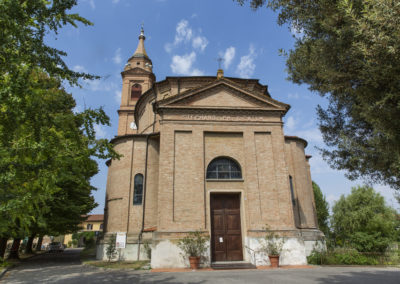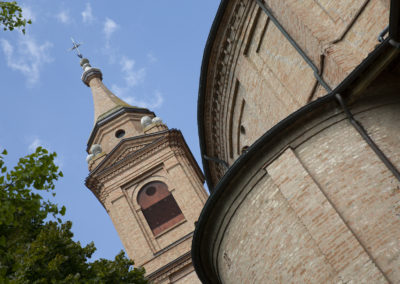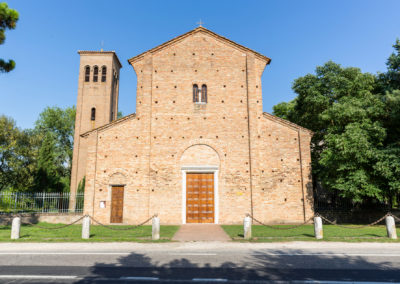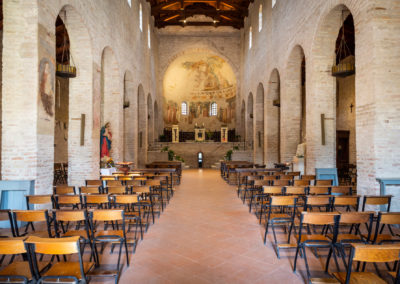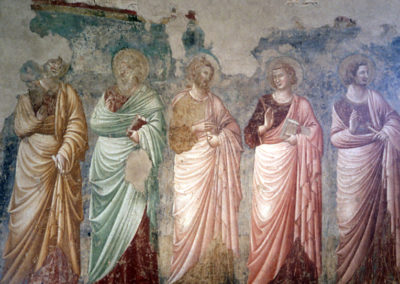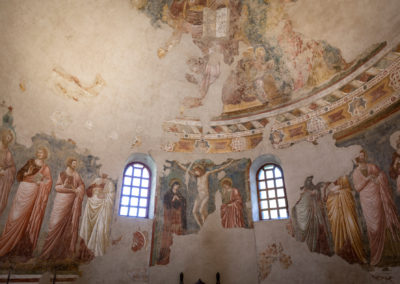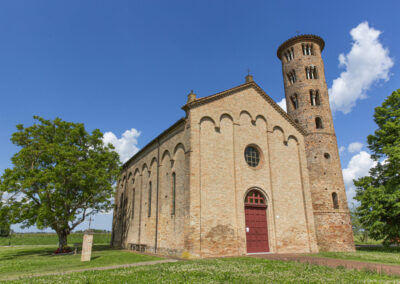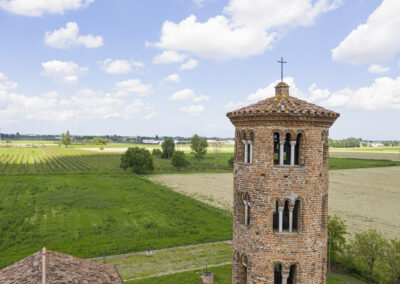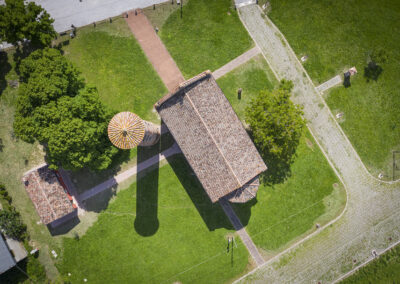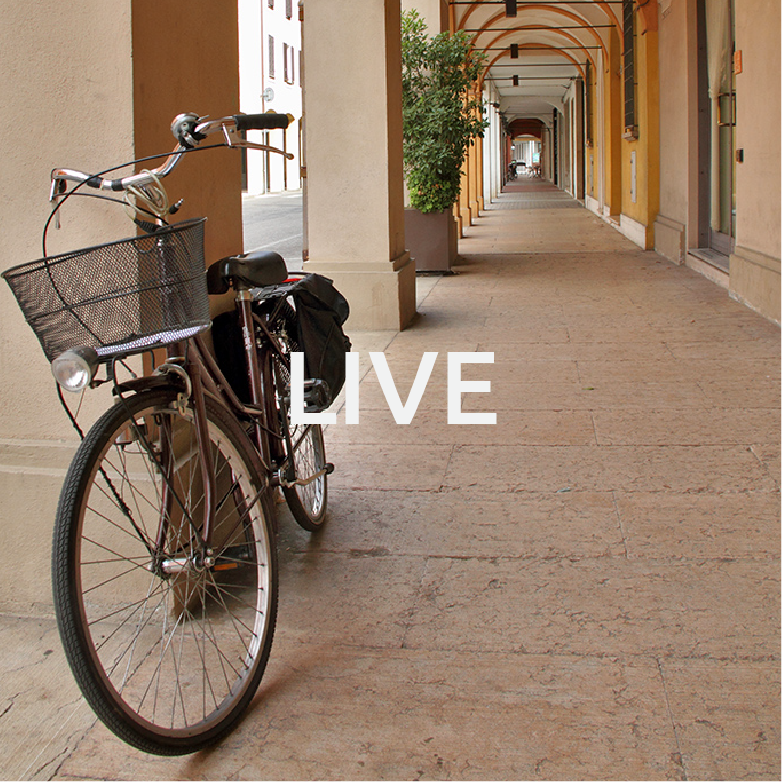A fascinating itinerary to discover the pievi of Bassa Romagna that tells the history of its countryside and how it changed since the Byzantine exarchate (VI century) with the spread of Christianity and the birth of a Christian rural system typical of the Early Middle Ages.
Located within the ancient Roman centuriation, whose traces can still be seen on the ground in the development of roads, the ancient pievi of our territory were built as places of worship provided with a baptismal font and a graveyard. With the disappearance of the Roman state system, they inherited the civil and administrative functions and they established themselves as the new core of the ecclesiastical system in the countryside. During the centuries they took on a mainly religious role and they always represented a spiritual and identity reference point for the inhabitants of the area.
From an architectural point of view, the Pieve di San Pietro in Sylvis and the Romanesque one of Santo Stefano still have the east oriented apses, simbolising with the rising of the light, the coming of Christ and they follow the model of the Ravenna’s buildings.
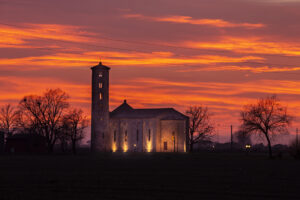
PRACTICAL INFO
INFO
- Interests: Art and culture
- Duration: 24h
- Target: Groups, Friends, Couples
- When: All year round
ITINERARY
FIRST STOP, Barbiano di Cotignola
Pieve romanica di Santo Stefano
In Barbiano, a small hamlet of Cotignola, stands an eighteenth-century church dedicated to S. Stefano. The church by Cosimo Morelli has a simple facade and it is flanked by a tall bell tower accurately rebuilt after the Second World War. Inside, the plan is elliptical with six chapels separated by Ionic columns that support a cornice on which spreads a very wide vault.
The neoclassical church holds a fascinating surprise for the visitors. Walking along its external perimeter, skilfully restored, getting to the back side next to the apse, it is possible to discern on the walls the remains of a pieve with the Romanesque structure typical of the area of Ravenna, built before 1409 in turn on the no more visible remains of a more ancient building dating back to 900AD.
SECOND STOP, Bagnacavallo
Antica pieve di San Pietro in Sylvis
The Romanesque Pieve di San Pietro in Sylvis in Bagnacavallo is among the best preserved in the area of Ravenna. It was built in the VII century, probably next to an ancient Roman temple dedicated to Jupiter.
It is located along the via dei Romei, the millenary road traveled by pilgrims to get to Rome , and it preserves interesting frescoes dating back to the XIV century illustrating the theory of the Apostles and Christ Pantocrator attributed to Pietro da Rimini.
The church was once completely painted and nowadays on the walls there are traces of 15th-century Ferrara school works, ancient coats of arms, an evocative ciborium and Roman handle bricks.
The picturesque crypt of the XI centuries made up of recovered material enriches the visit.
THIRD STOP, Santa Maria in Fabriago di Lugo
Antica Pieve – Chiesa di Camapanile
In the Early Middle Ages the countryside of Lugo saw the rise of one of the most ancient parish churches in the area of Ravenna: the currently called Pieve di Campanile. Originally it was called the Pieve di S. Maria in Centumlicinio and then di S. Maria in Fabriago in the High and Late Middle Ages.
The present structure of the church is single nave with a polygonal apse rebuilt at the beginning of the XVI century. The cylindrical high and majestic bell tower of the XI century invites the visitors to get closer to immerse in a place of a great appeal that traces back to the deepest cultural and religious roots of our territory.

